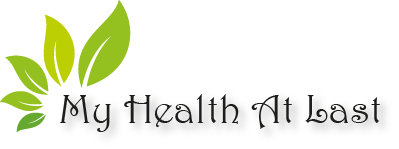
Chestnuts
🌿
Chestnuts are edible nuts produced by the trees and shrubs of the Castanea genus, which are commonly found throughout the northern hemisphere.
While there are a number of different species of chestnuts, most of them possess similar qualities and nutritional profiles.
They should not be confused with horse chestnuts, which are quite different.
Slightly sweet with just the right amount of crunch, chestnuts are versatile, delicious, nutrient-dense foods and loaded with health benefits.
Interestingly enough, the chestnut is considered both a nut and a fruit. This is because fruits are technically defined as the product of a flowering plant, and most nuts fall into this category.
The main types of chestnuts include: American chestnut, Sweet chestnut (also called Spanish chestnut), Chinese chestnut and the Japanese/Korean chestnut.
🌿
The sweet chestnut was introduced into Europe from Sardis, in Asia Minor; the fruit was then called the Sardian nut.
It has been a staple food in southern Europe, Turkey, and southwestern and eastern Asia for millennia, largely replacing cereals where these would not grow well, if at all, in mountainous Mediterranean areas.
Evidence of its cultivation by man is found since around 2000 BC. Alexander the Great and the Romans planted chestnut trees across Europe while on their various campaigns.

A Greek army is said to have survived their retreat from Asia Minor in 401–399 BC thanks to their stores of chestnuts.
Ancient Greeks, such as Dioscorides and Galen, wrote of chestnuts to comment on their medicinal properties
🌿
It is believed that Chestnuts carry masculine energy and resonate with the fire element and the planet Jupiter.
The chestnut tree is associated with the God Zeus. Chestnuts can be eaten to encourage fertility and desire and may be carried as a charm by women who wish to conceive.
Keeping chestnuts around the house (and eating them) encourages abundance.
Staves made from chestnut wood are said to encourage longevity, increase energy, enhance intuition and help with grounding and centering of energy.
Chestnut wood can also be used to make talismans for justice, success, to gain the sympathy of your audience and to encourage your mind to take in information.
In Japan the chestnut fruit symbolizes both difficulties and overcoming them. They are eaten on New Year’s day for success and strength the coming year.
Early Christian folklore says that chestnuts symbolize chastity.
🌿
Native Americans may have used a tisane of chestnut leaves to treat severe coughs and heart disease, a poultice of the leaves for sores and a decoction of the bark to treat worms.
Tisanes (pronounced ti-zahn) are not actually teas at all (i.e., they do not come from the Camelia Sinensis plant).
Instead they are infusions made from leaves, bark, roots, berries, seeds, and spices. Common tisanes include mint, chamomile, verbena, and rooibos.
Eating the nut itself will improve the mind and its ability to function in a number of ways.They are rich in the B family vitamins (folate, riboflavin, thiamine) which are directly linked to proper neurological development and function.
Furthermore, the potassium found in chestnuts can increase blood flow to the brain and promote good nervous system health, thus increasing concentration, retention, and memory.
🌿
Calcium, Phosphorus, and Magnesium are all present in Chessnuts making them very effective for good dental & bone health.
Magnesium forms the hard enamel around your teeth and protects the bones from degeneration and decay
Calcium and phosphorus are two minerals that are absolutely essential for bone health as they make up the main composition of bones, however, a healthy dose of Magnesium is required for the other two to carry out their function effectively.
Chestnuts contain essential fatty acids that are required by our body and are derived from the dietary sources.
Chestnuts are particularly rich in linoleic acid and have Palmitic acid and Oleic acid.
They also have a low level of cholesterol and can help in bringing down the levels of “Bad Cholesterol” or LDL in the blood vessels.
LDL can create deposits of plaque along the inner lining of blood vessels making them rigid over a period of time.
Food items like chestnuts clear this plaque and discourage its formation ensuring elasticity and healthy network of blood vessels.
🌿
A high amount of Vitamin C, Gallic acid, and Ellagic acid make Chestnut a strong and very effective anti-oxidant that will assist in detoxify and optimizing the immune function of the body.
The ellagic acid in Chestnuts can help support the Thyroid function where one experiences hyperthyroidism or an overactive thyroid function.
Iron and copper are two important elements required for blood and its production. Both of these trace metals are present in Chestnuts in adequate quantities.
People suffering from anemia can consume Chestnuts to alleviate this condition effectively.
Chestnuts are very effective in providing relief from pain, swelling and inflammation caused by the wear and tear of body tissues, and helps in quick healing of wounds and treats hemorrhoids.
These benefits of chestnut are because of the anti-inflammatory and astringent properties of chestnut ( due to the presence of tannin in it).
🌿
Chestnut trees are excellent additions to wildlife and butterfly gardens.
They provide nutritious food for a number of birds and small mammals as well as a number of different types of butterflies and moths.
The Chestnut is high energy and low-fat nut. It is a rich source of vitamins and has 60% water content that makes it much healthier and different from other nuts.
Unlike other nuts, chestnuts are high in complex carbohydrates which means eating chestnuts can help in maintaining the stable energy level.
Chestnuts can make a major impact on your overall well-being if included regularly as part of a healthy diet.
🌿
#Chestnut #Nuts #Health #Wellbeing #FoodIsMedicine #Healing #Vegan #Heal #NaturalCures #NaturalMedicine #AlternativeMedicine #VeganPower
#DrugFreeHealing #Magnesium #WorkOutFood #GymSnack #Nutrition #Calcium #StrongBones #StrongTeeth #Anemia #Iron #RespectYourTemple
Resources: OrganicFacts, DrAxe, Wikipedia, GoodHealtHall, Witchipedia, WikiFitness, Hypnogoria

